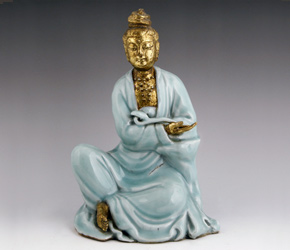 |
|
"Quan Yin (Guanyin) is spelled with the Chinese characters of ‘perceive’ ‘world’ and ‘sound’, implying that she is the perceiver of all the sounds or outcries of the world. Quan Yin protects worshipers from natural catastrophe and grants blessings to children"
An understanding of Quan Yin inevitably revolves around a discussion of Avalokitesvara, the Tibetan Bodhisattva (enlightened being or Buddha-to-be) of compassion. It is said Avalokitesvara was born from a tear in Buddha’s eye and came into being to deliver infinite compassion to all living things. Avalokitesvara is, in fact, the embodiment of compassion, the most fundamental aspect of “buddhahood,” an enlightened state which lies within all human beings. Quan Yin is spelled with the Chinese characters of ‘perceive’ ‘world’ and ‘sound’, implying that she is the perceiver of all the sounds or outcries of the world.
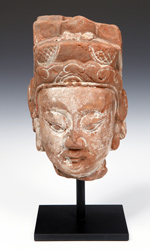 |
|
In different countries Avalokitesvara goes by different names. In China, Avalokitesvara is known as Quan Yin and thought of as a feminine bodhisattva. This concept suggests the compassion of the enlightened being is like that of mother, sister, friend, and queen. Although the concept of Quan Yin as a feminine deity can be traced back to the fifth century, it was not until the twelfth century the feminine characterization came to predominate. In earlier depictions Quan Yin was seen as a young man with his chest bared or with a thin mustache over his lips. Some believe Quan Yin is androgynous.
A popular image of Quan Yin presents her as a being with many heads and arms – Quan Yin with a Thousand Arms. Legend says that in her effort to listen to the plights of so many people her head split into eleven pieces and when she tried to reach out to the multitudes in need her arms shattered. So the Celestial Buddha, Amitabha Budda, granted her eleven heads and a thousand arms to better hear and help those who seek her compassion. Quan Yin vows to save and liberate all sentient beings from the cycle of reincarnation.
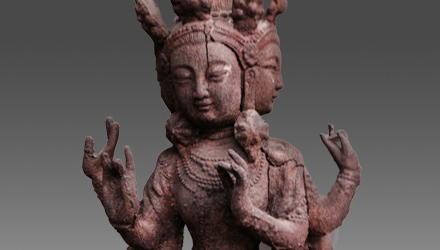 |
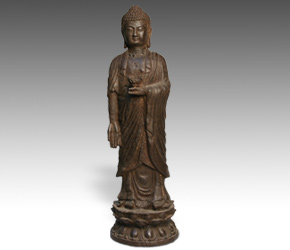 |
More than any other Buddhist figure, Quan Yin has fully entered into the religious imagination of all Chinese, Buddhist or not. She is always enshrined in Buddhist temples as well as temples devoted to Taoism and other spiritual disciplines found in China. She figures in many stories and novels, funerals, and popular festivals. Along coastal and river regions Quan Yin is also revered as a guardian to fishermen and sailors out at sea. She is the first bodhisattva to whom people turn in times of trouble, and the first to whom they give gratitude for blessings. In short, this religious figure has assumed an honorary role in popular Chinese culture.
Quan Yin is venerated, worshiped, and invoked for many reasons. In folk belief Quan Yin protects worshipers from natural catastrophe and grants blessings to children. In fact, Quan Yin is also known as the “baby Buddha” because it is believed she can grant the blessing of conception. On one level, the infinite compassion of Quan Yin is able to save beings from suffering by awakening them to their own enlightened mind. On another, Quan Yin’s intervention on behalf of all those who call upon her stands as myth, conveying belief in her miraculous power to save and teach.
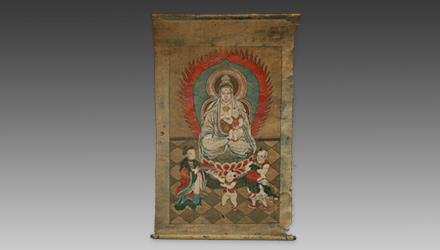
|
|